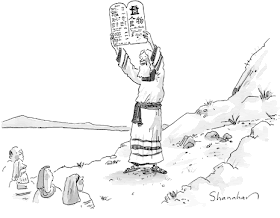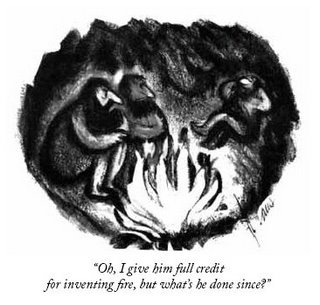“The nation will continue buying US government debt but pay close attention to possible fluctuations in the value of the assets, a vice-governor of the central bank said yesterday.”
The Wall Street Journal on March 13 2009:
“Chinese Premier Wen Jiabao expressed concern over the outlook for the U.S. government debt China holds, urging Washington to take effective policies to restore the American economy to health.”
In “History of the World, Part I” (1981), Moses (Mel Brooks) is shown coming down from Mount Sinai after receiving the Law from God. When announcing the giving of the reception of the law to the people, Moses proclaims “The Lord Jehovah has given unto you these fifteen...” (whereupon he drops one of the tablets, which promptly shatters) “Oy...Ten! Ten Commandments! For all to obey!” (source: Wikipedia)
The dropped tablet has now been restored.

Artist: Danny Shanahan, The New Yorker, March 30 2009, Cartoon Caption Contest #186
My caption:
“It says in Mandarin: You shall buy US government debt.”







